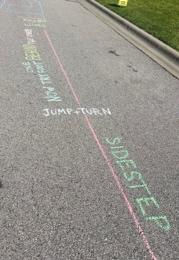Codeswitching
- All Care Therapies

- Nov 19, 2021
- 2 min read

What is code-switching and why is it important? Codeswitching refers to any switches between languages that occur within or across sentences during the same conversation or
discourse. Codeswitching is commonly used by people who know 2 or more languages. Very
few bilinguals keep their two languages completely separate, and the ways in which they mix them are complex and varied. Bilinguals often codeswitch when speaking with other bilinguals, however it may occur when speaking with a monolingual speaker as well. Some examples of codeswitching may look like:
1. Switching a single word within an utterance or sentence (Spanish/English): Leo un magazine. [I read a magazine].
2. Switching within a sentence (Spanish/English): Please go to the mercado and buy some leche y queso. [Please go to the store and buy some milk and cheese].
3. Switching from one sentence to the next (English/Welsch): Come to the table. Bwyd yn barod.
[Come to the table. Food is ready].
Listed are some of the reasons and ways bilingual people use codeswitching: to
emphasize, to substitute, to discuss concepts without equivalences, to problem solve, and to reinforce.
Codeswitching may be used to emphasize a point in a conversation. A person may be stressing a particular word in the sentence, or to stress the importance of the sentence.
Codeswitching may be used to substitute a word or phrase if the person does not know the word or phrase in the other language. Bilinguals may also use substitution, because they are unable to think of the word or phrase at that moment during the conversation and the word or phrase in the home language is more readily available.
Words or phrases in two languages may not correspond exactly, switching to one language may express a concept that has no equivalent in the culture of the other language. For example, a person who can speak English and Spanish may use the word “pub” when speaking French, because there is no equivalent or direct translation to the word “pub.”
People may use both their languages to help navigate through a problem. A person trying to solve a problem in one language, may also utilize their other language(s) to rephrase and rethink through the same problem.
Codeswitching may also be used to reinforce a request or command. For example, a Spanish/English speaking mother might tell her children “Cállense! Be quiet!” to reinforce her command.
Resources
1. Baker, C. & Wright, W. (2017). Foundations of Bilingual Education and Bilingualism 6th
Edition. Multilingual Matters.




Comments